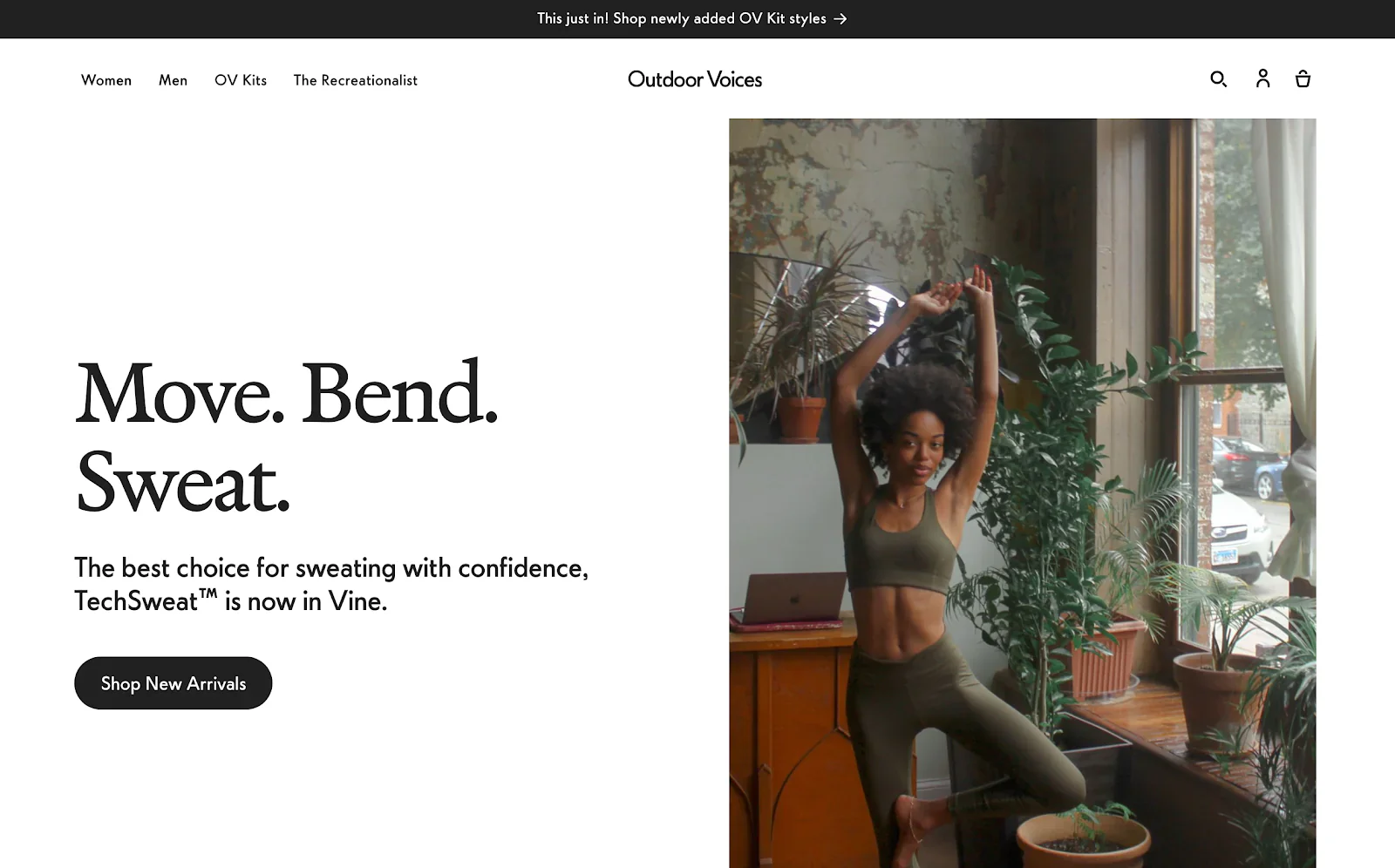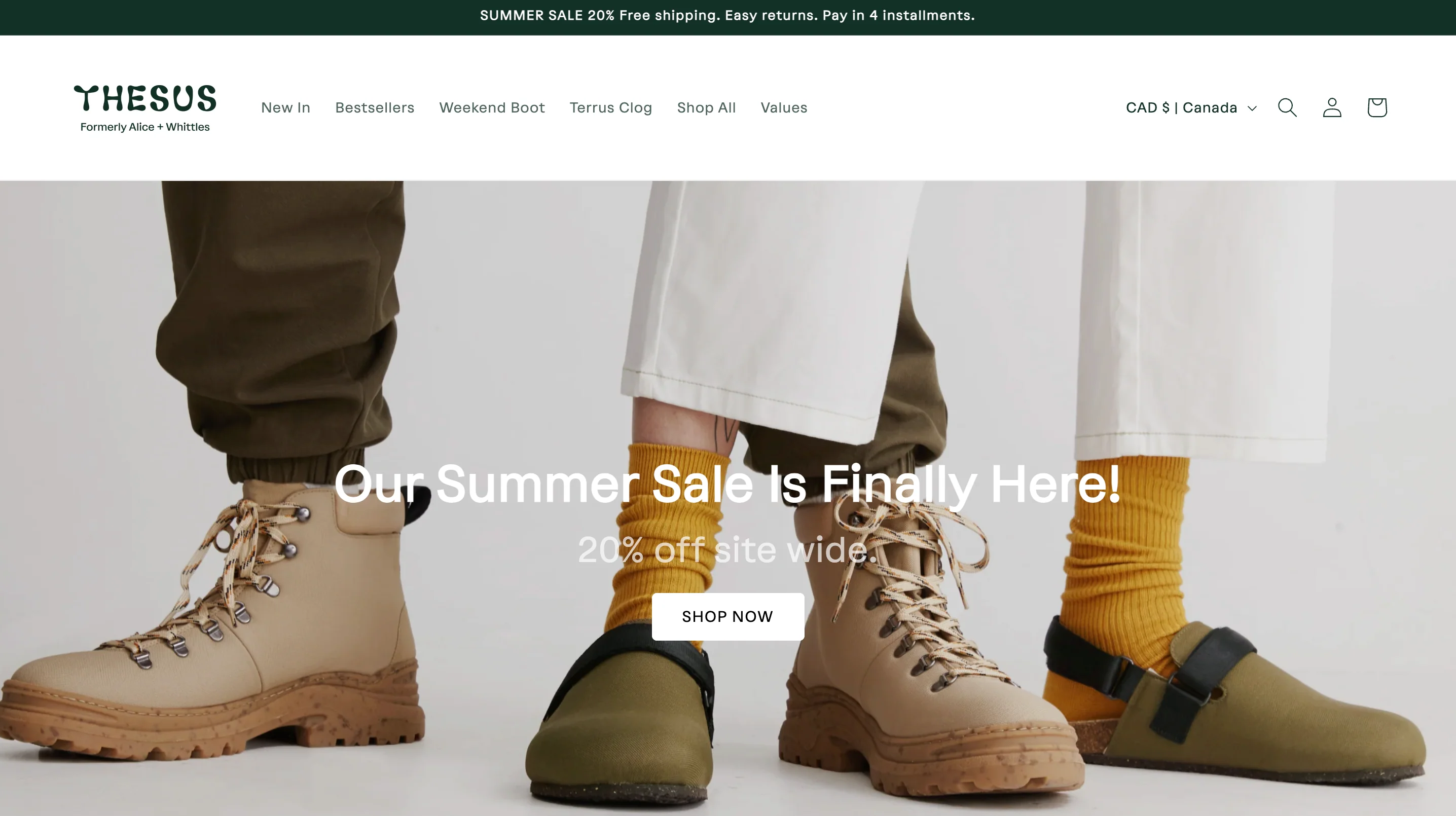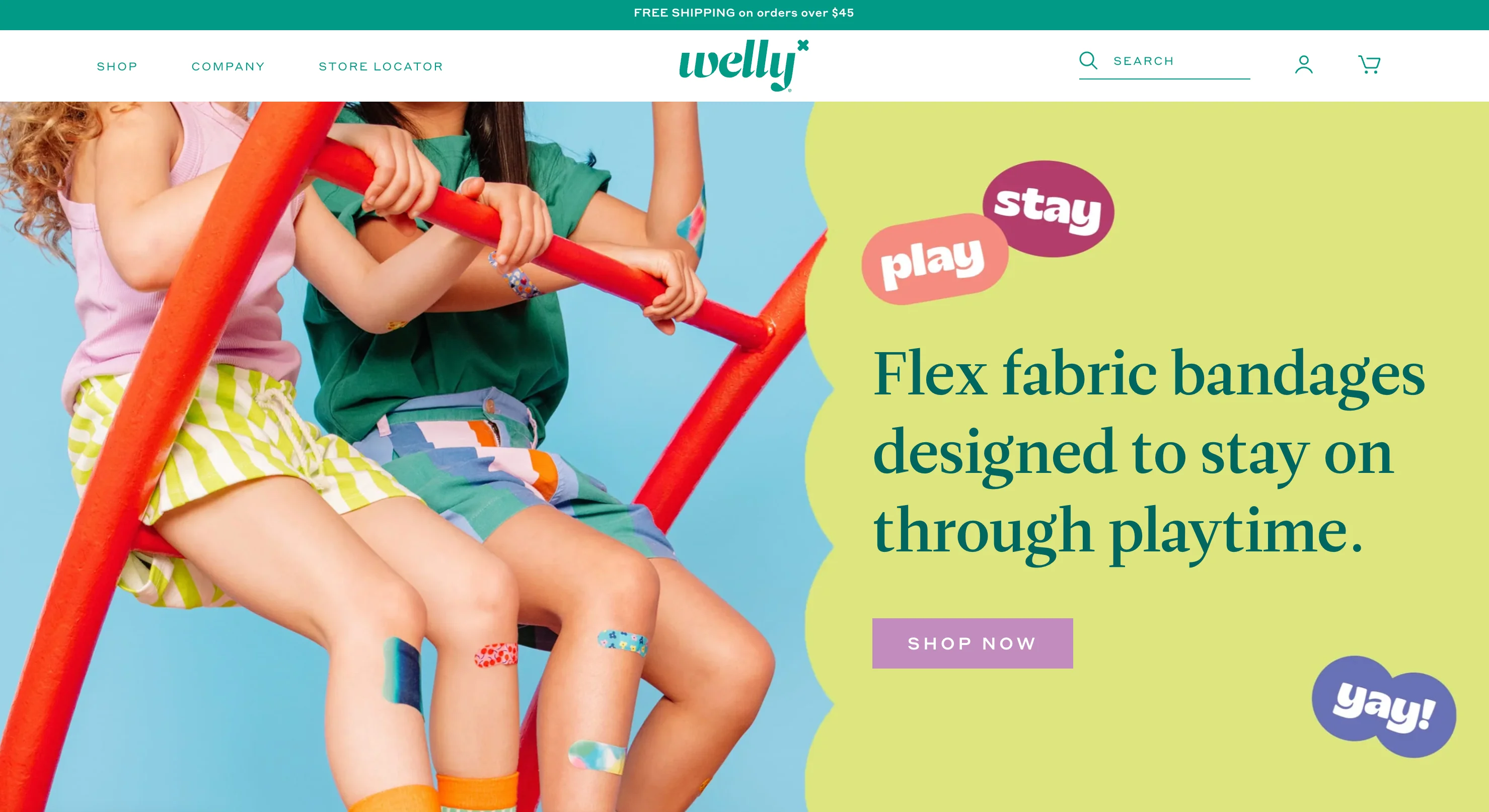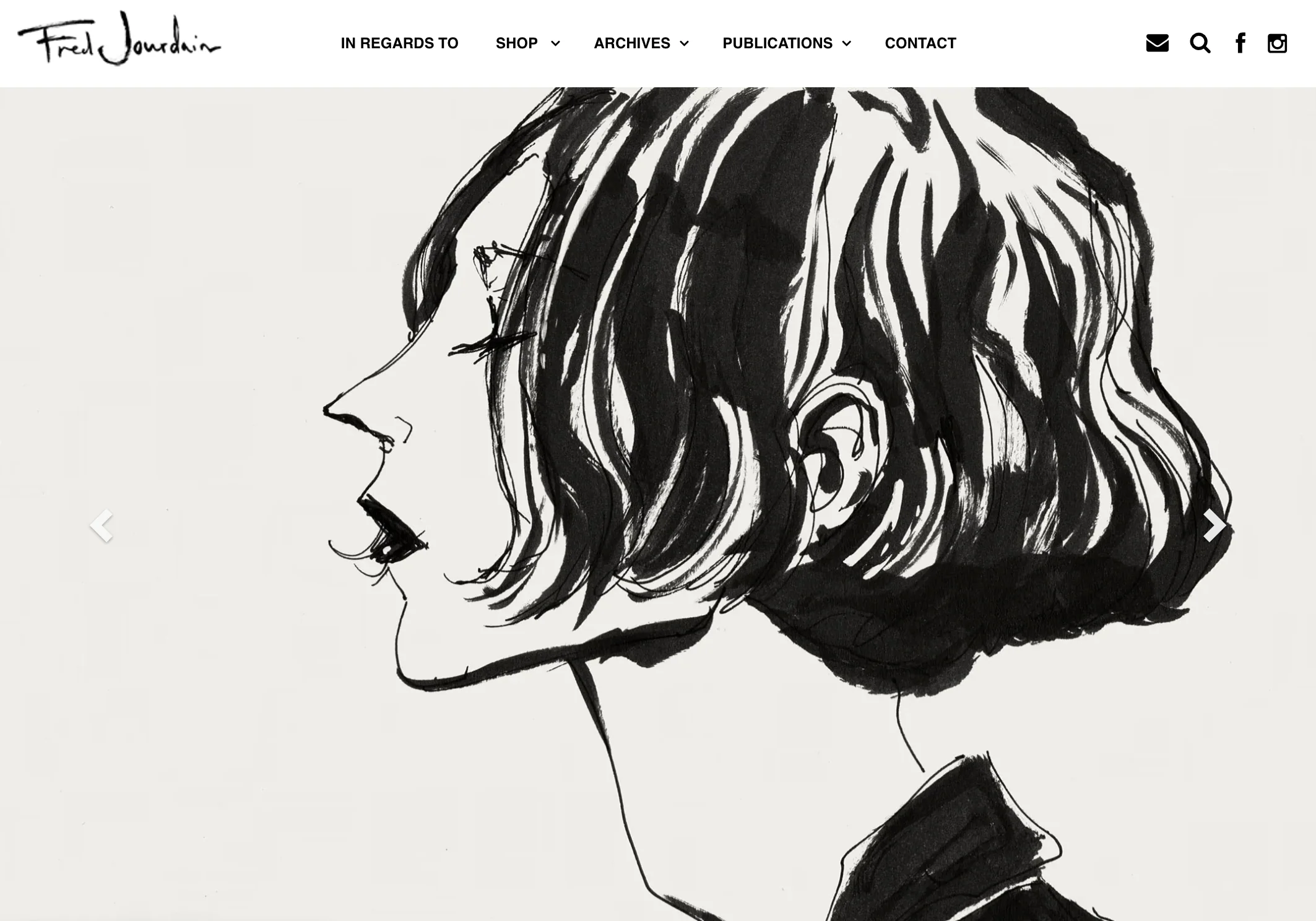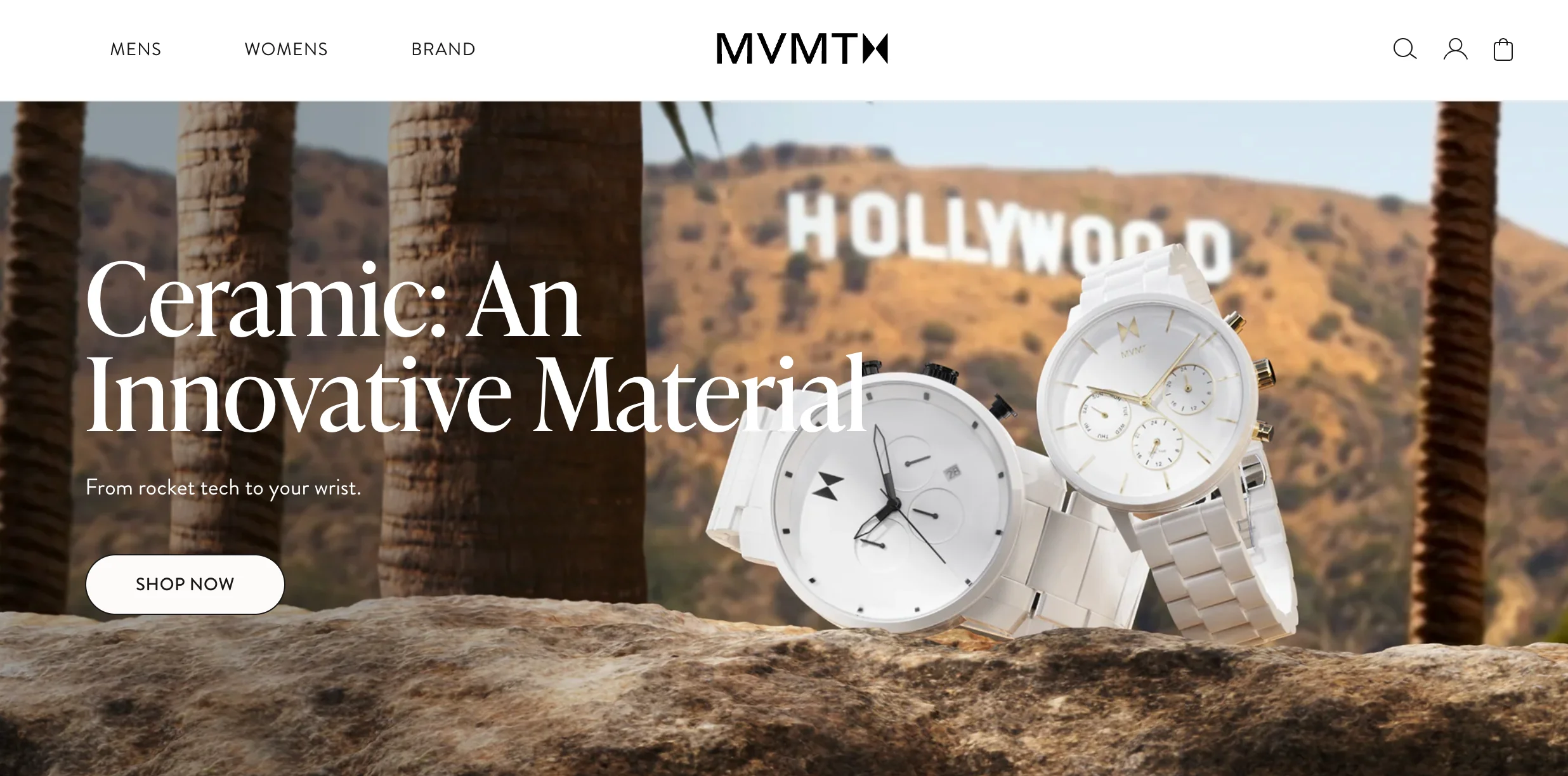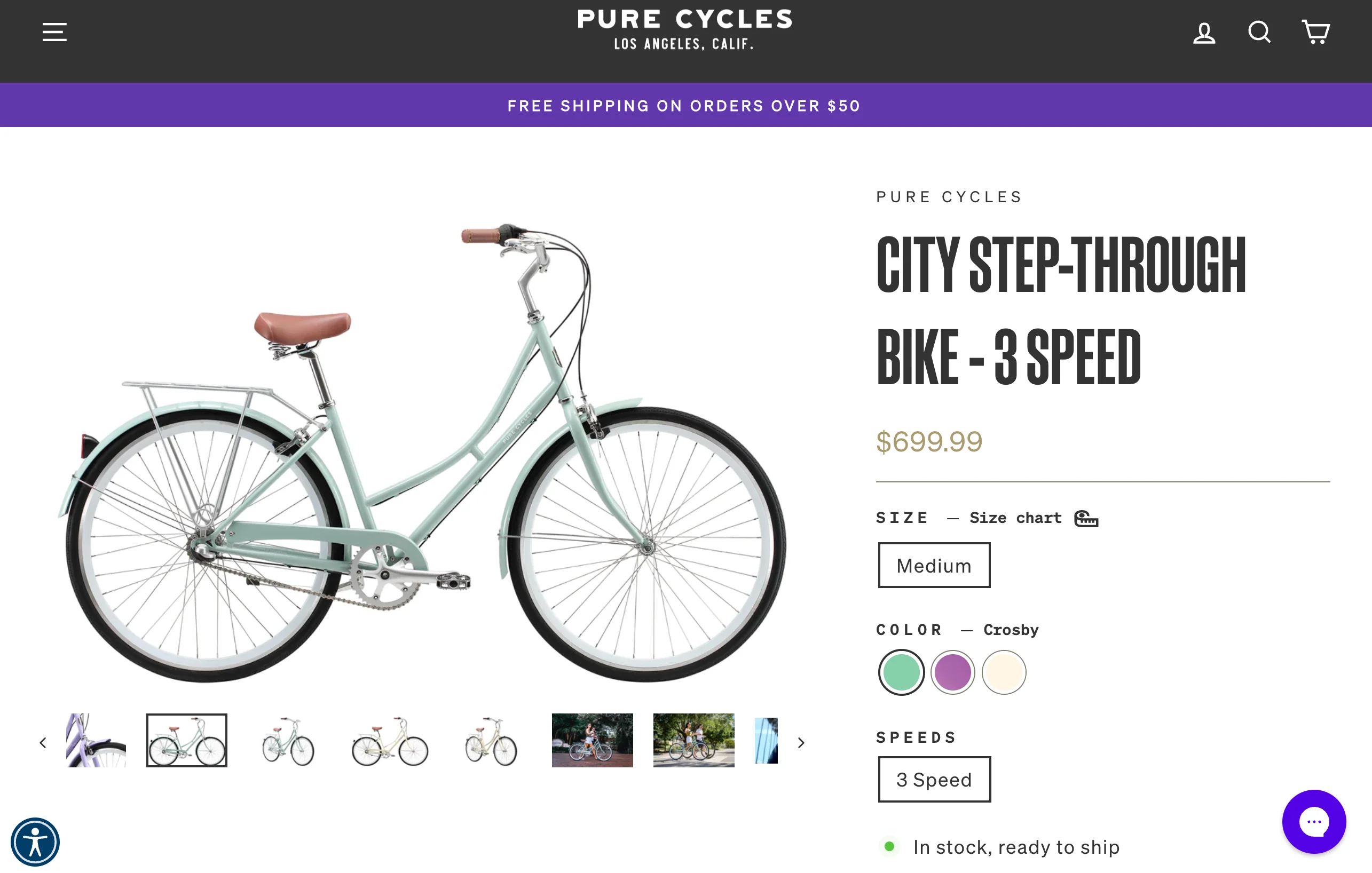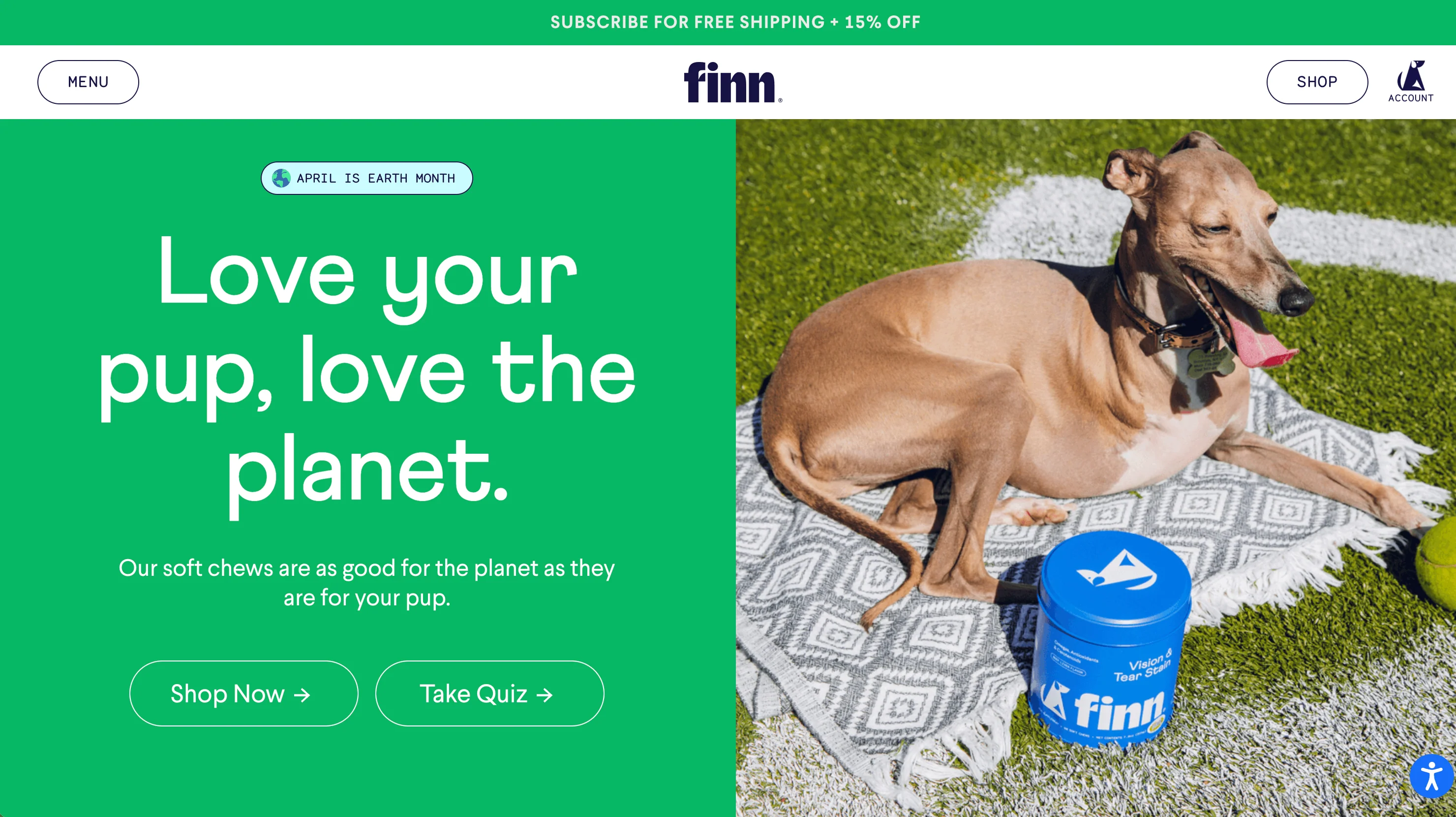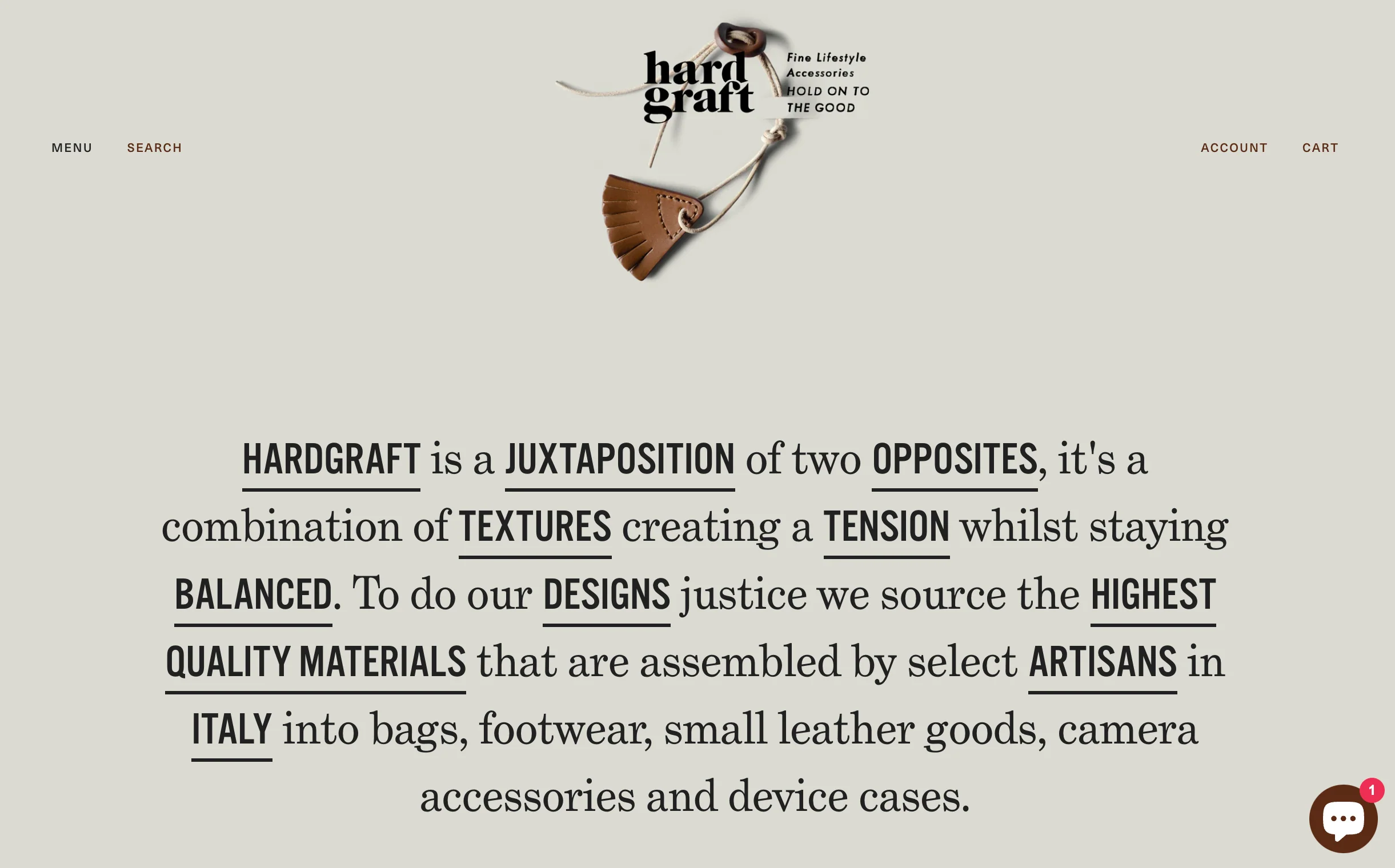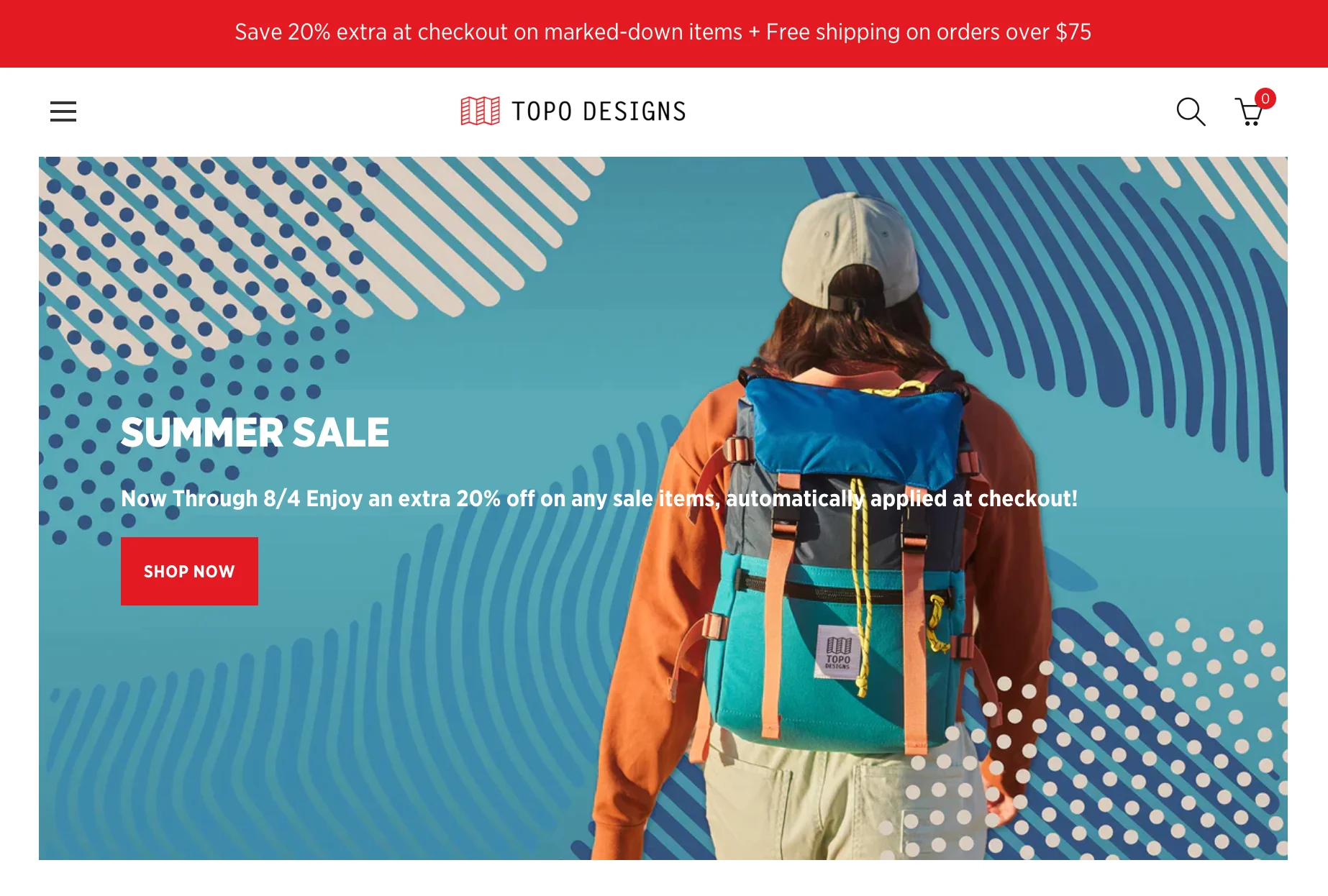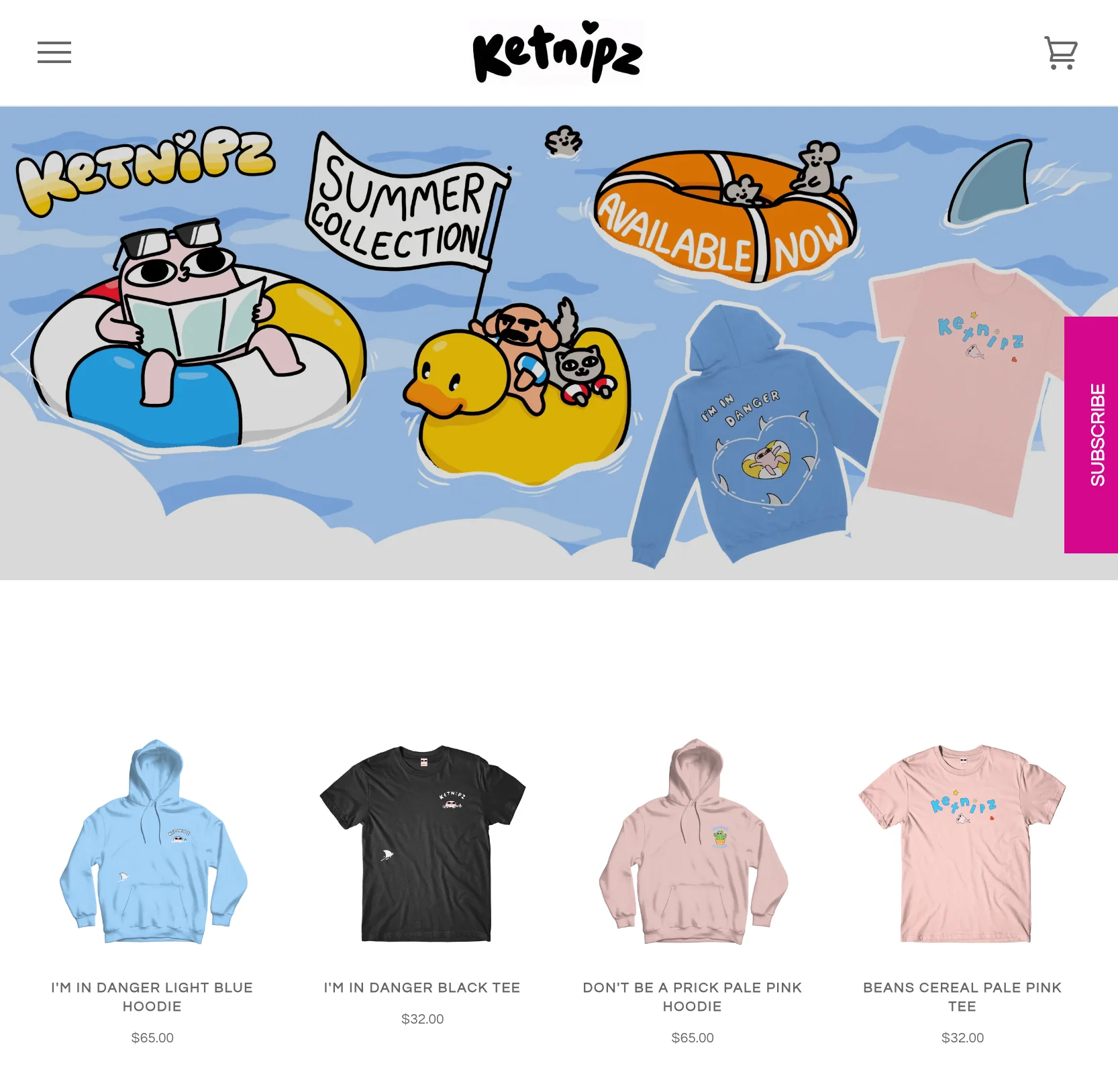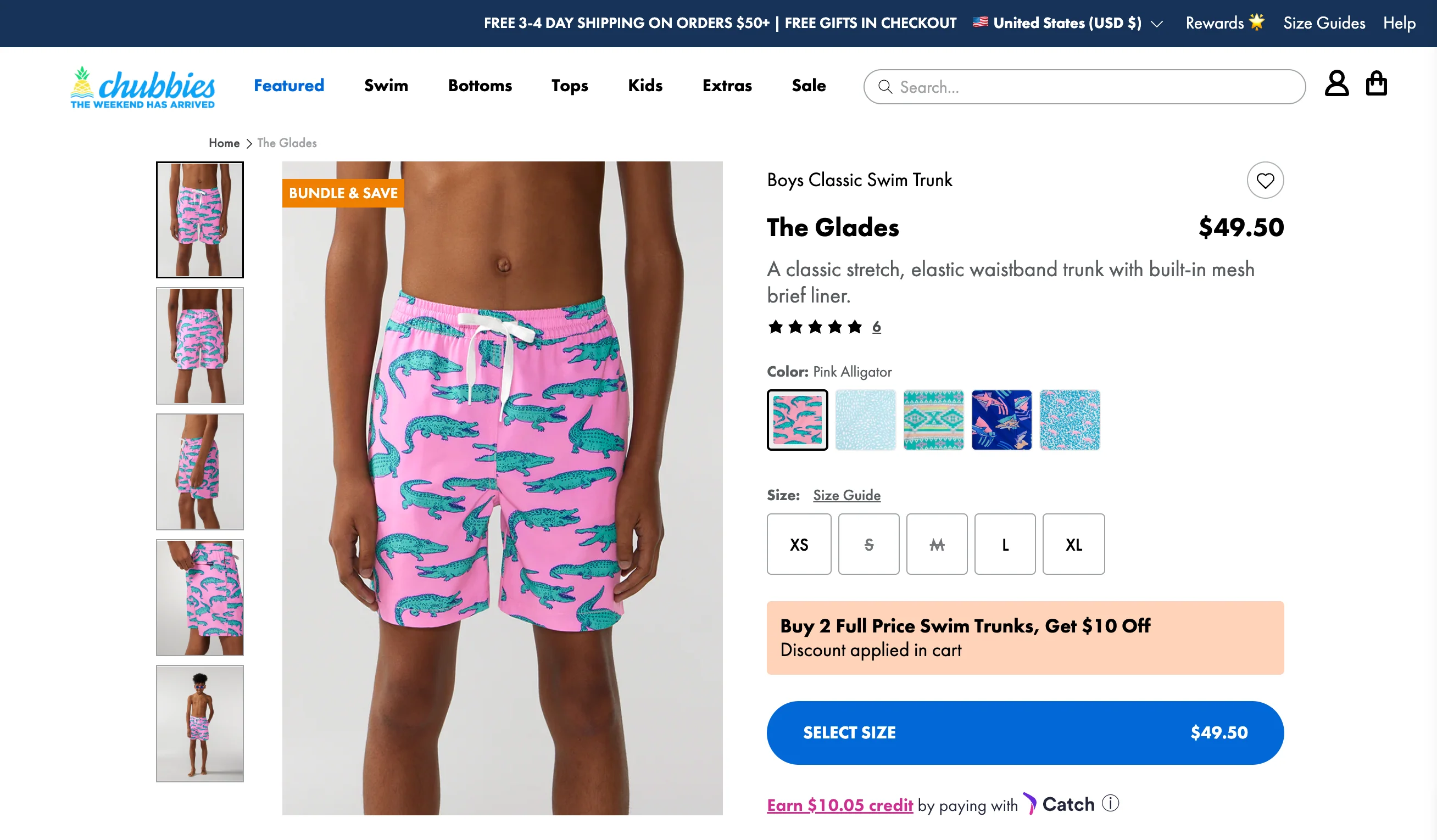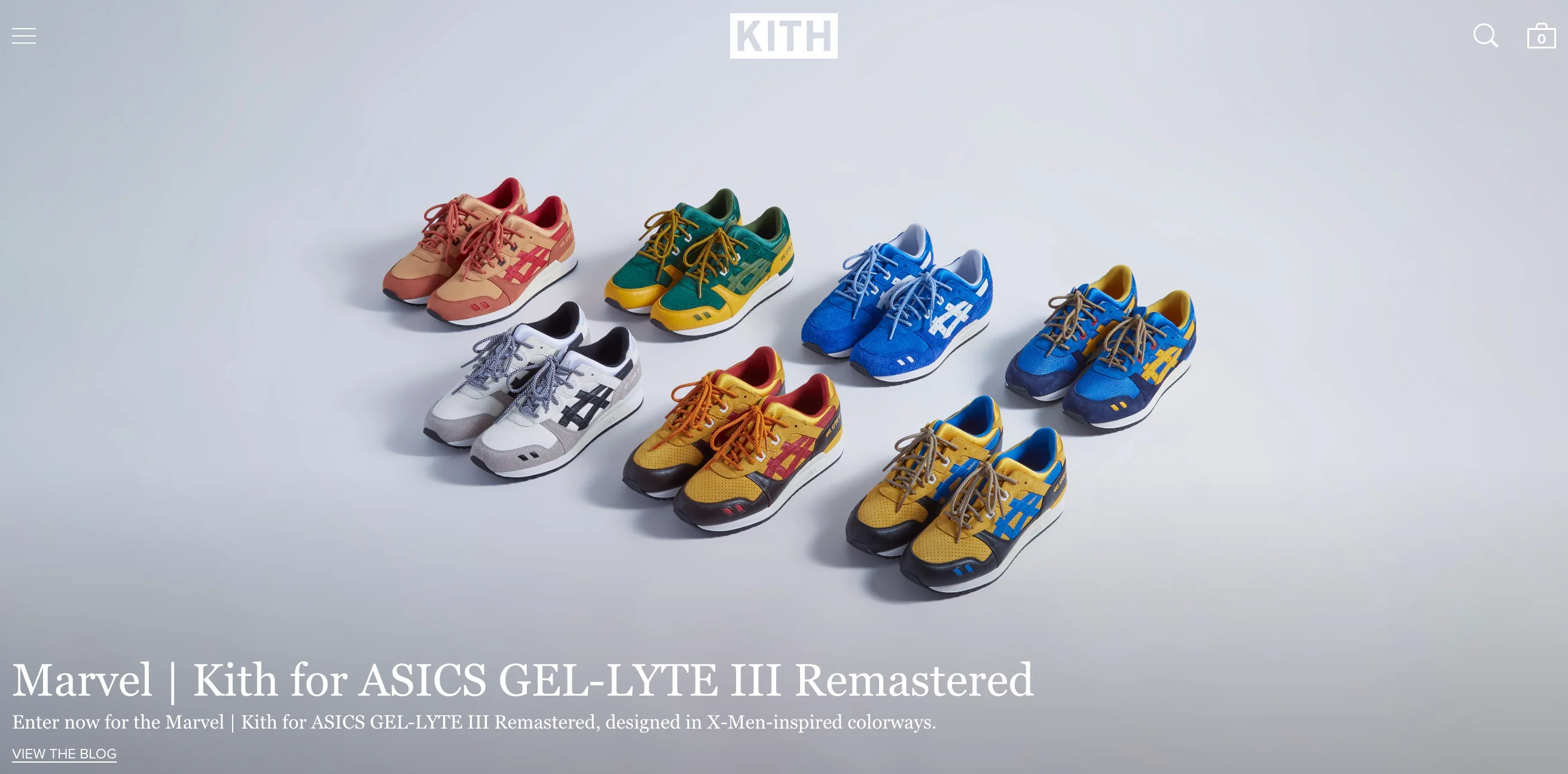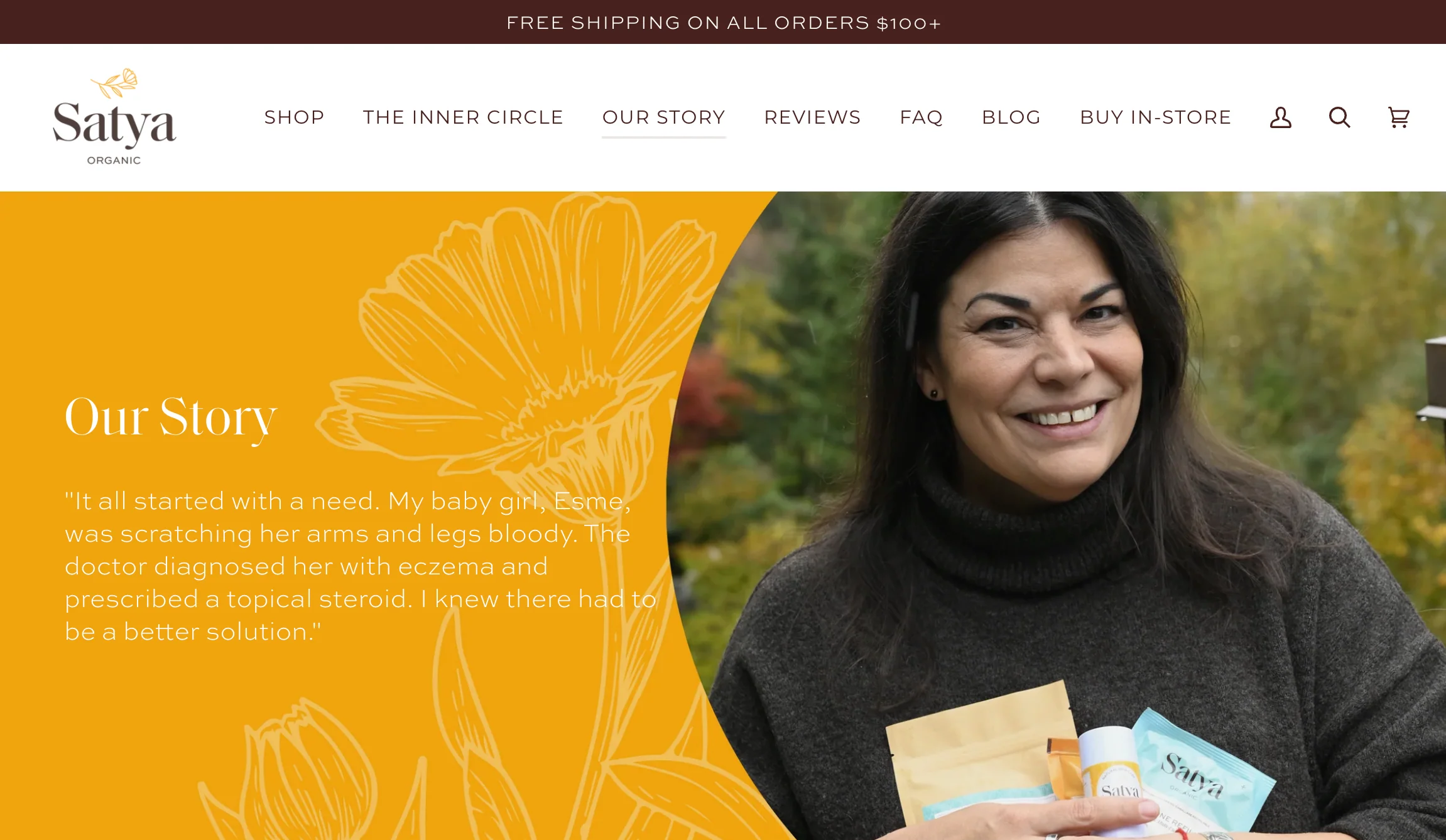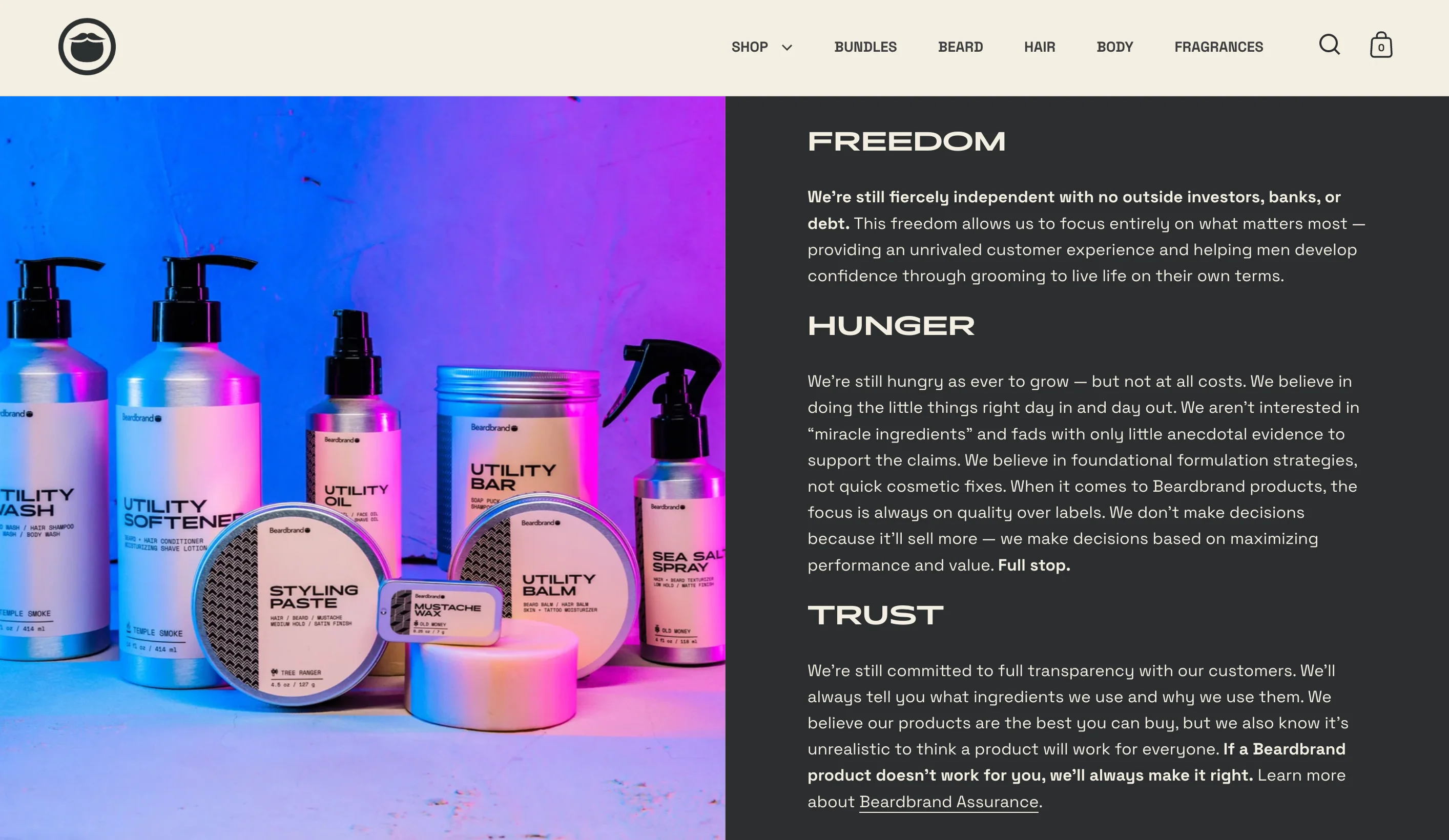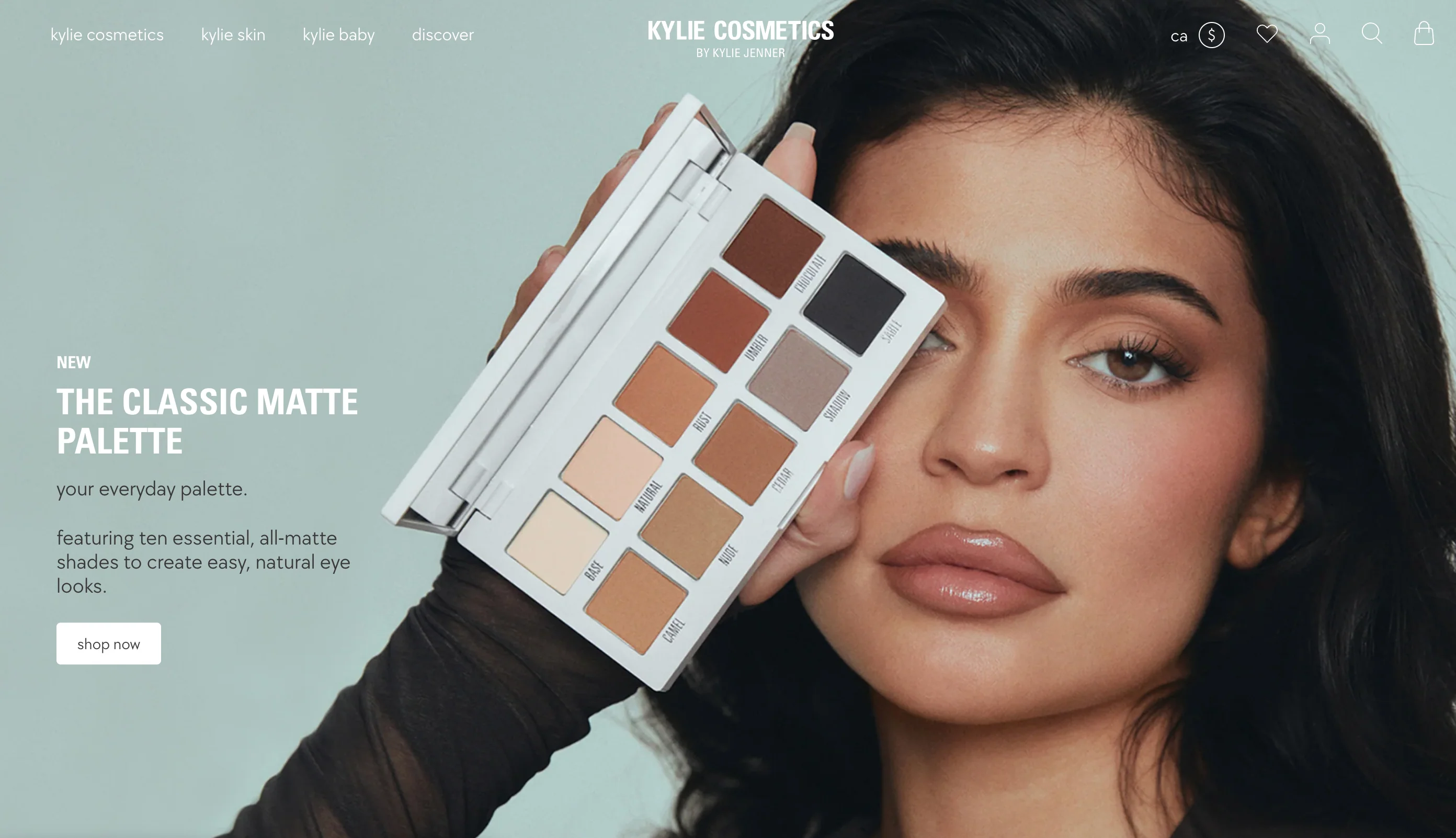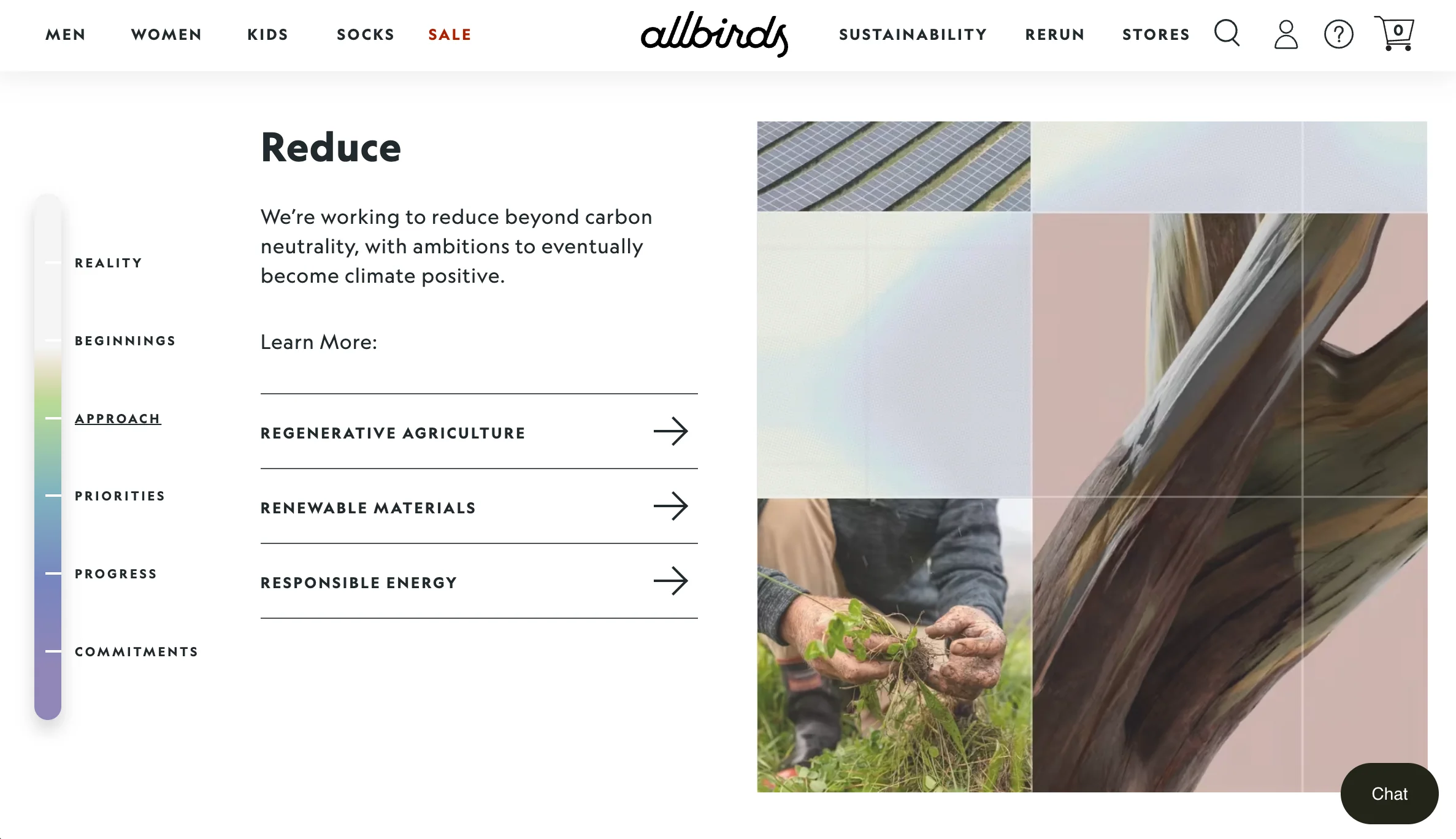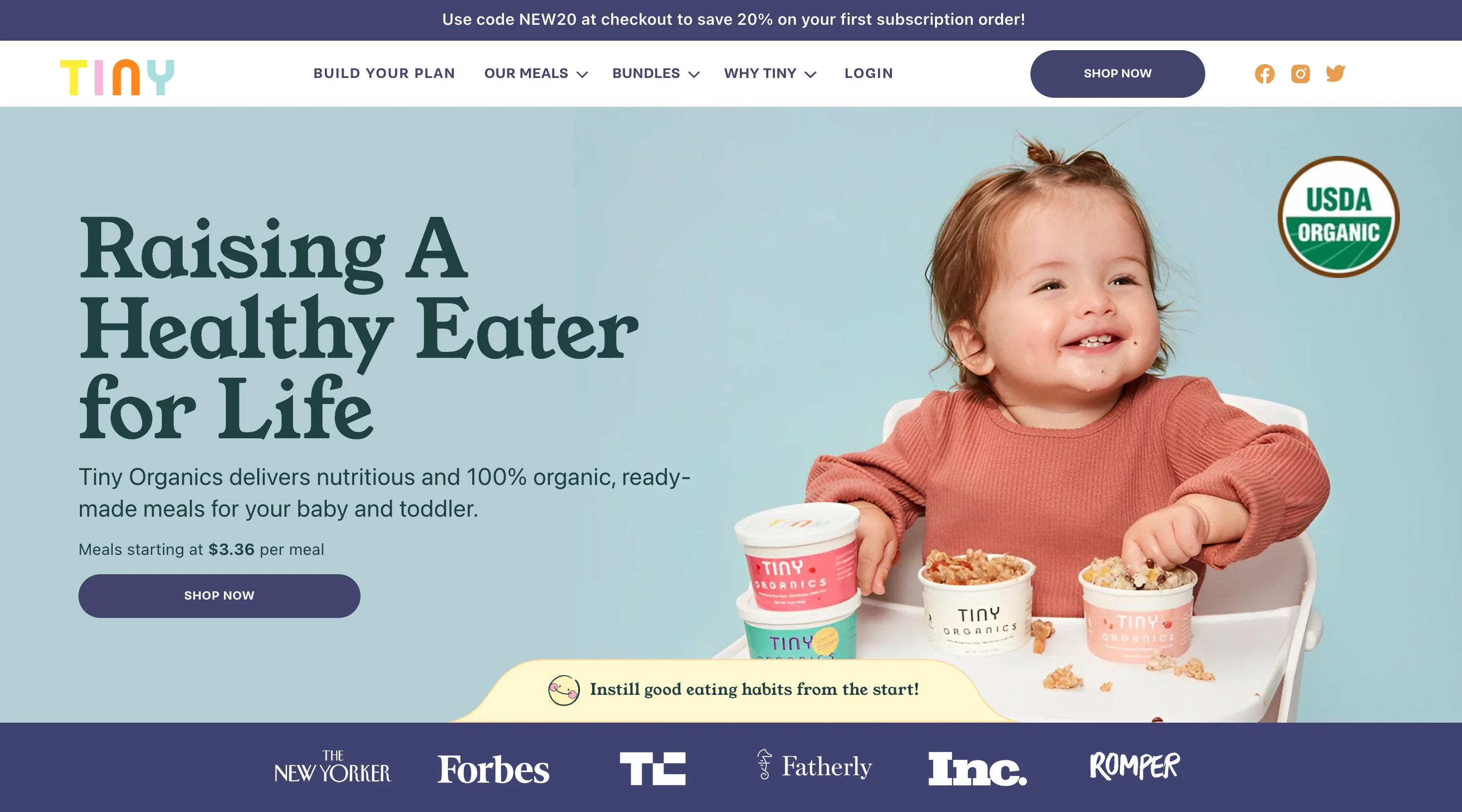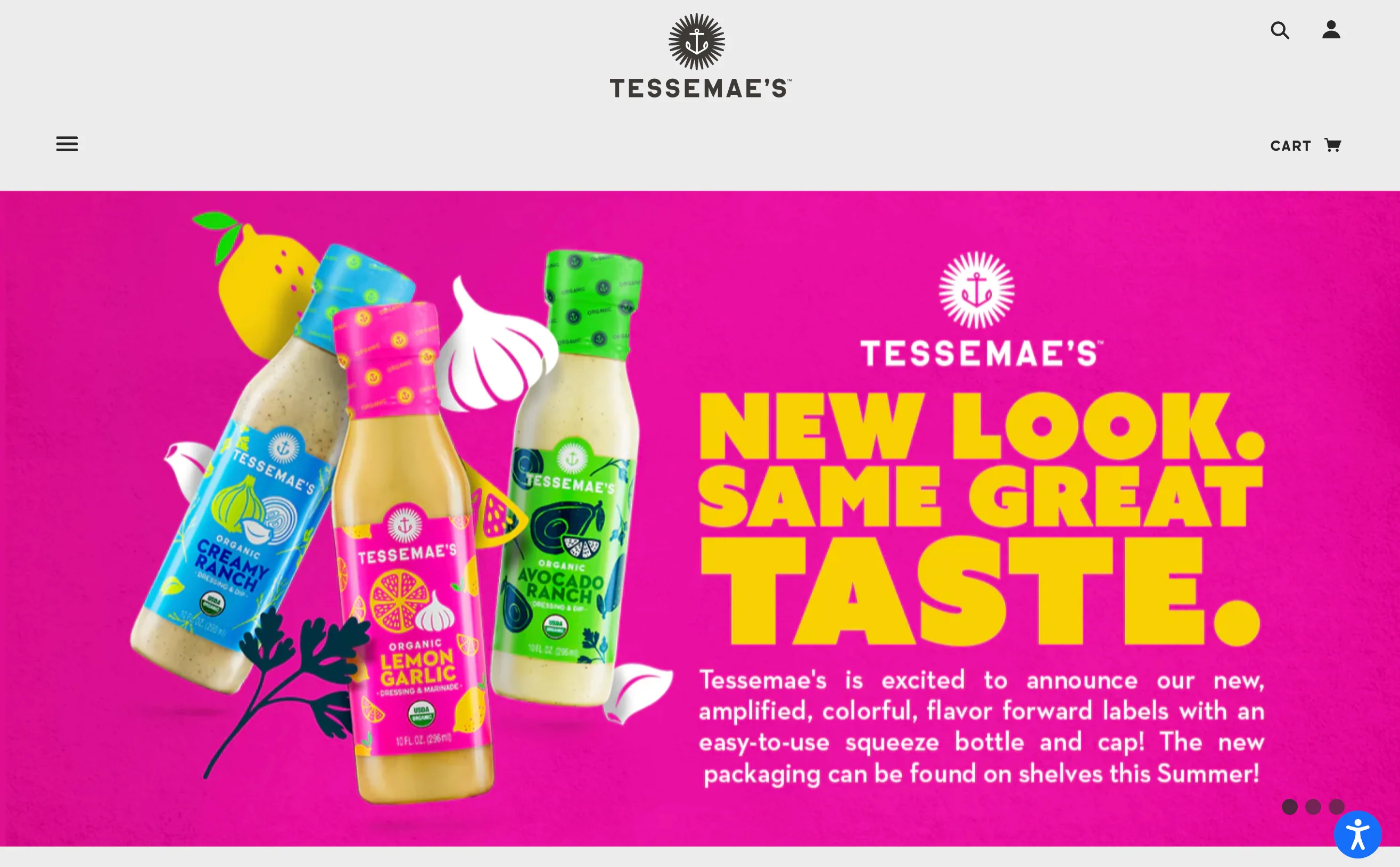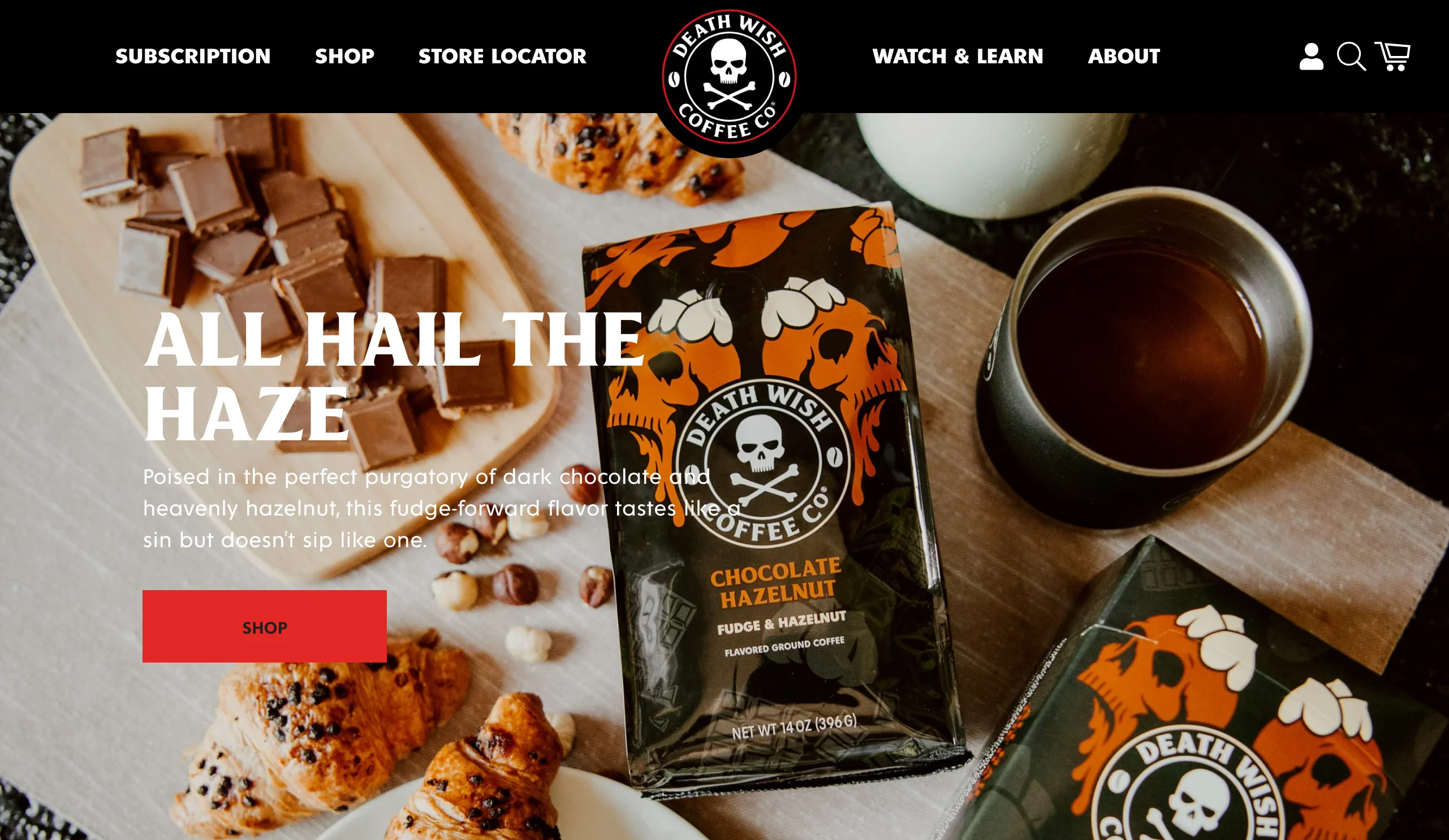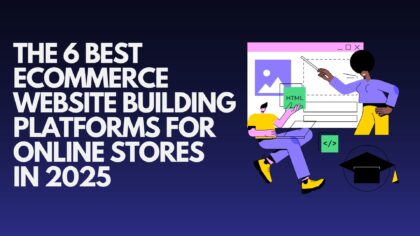Ecommerce Website Design: Top Examples and Expert Tips (2025)
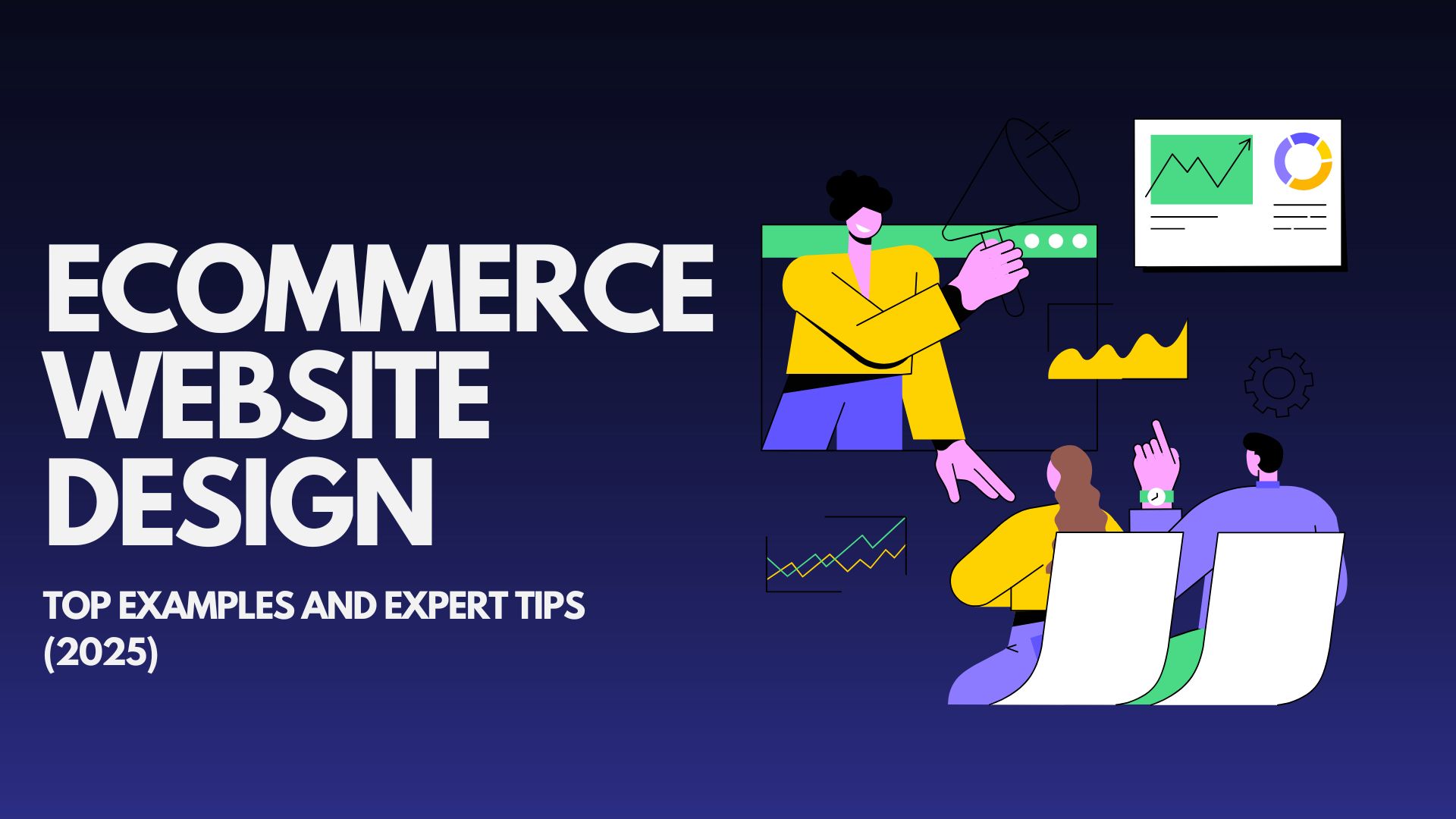
A visually appealing and well-designed ecommerce website is crucial for the success of your online sales and marketing strategy. Studies have shown that it only takes 50 milliseconds for users to decide whether they will stay on an ecommerce site. This brief window of time underscores how important website design is for your online business.
Whether you’re launching your first online store or considering a redesign, this guide will walk you through top ecommerce website design examples, tips for choosing the right platform, and expert advice to help your online store stand out.
Table of content
Key Elements of Effective ecommerce Website Design
1.Building Trust with Customers
When visitors first land on your ecommerce site, they might not know anything about your brand or product quality. Building trust is essential before they commit to a purchase. Here are some ways to establish credibility:
- Contact Information: Display an email, phone number, and mailing address, ideally in the footer and on the contact page. This reassures customers that they are engaging with a legitimate business.
- Return Policy: A clear and easy return policy fosters trust by offering customers peace of mind. Highlighting free returns, like Supergoop, can boost customer confidence.
- Technical Certifications: Show security certifications or badges, especially when accepting payments. This assures visitors that their personal data is protected.
- Customer Reviews: Incorporate customer testimonials and reviews to demonstrate social proof. Positive reviews from real customers can enhance trust and encourage purchases.
2. Creating a Visually Engaging Experience
The look and feel of your website significantly influence how potential customers perceive your brand. Here are some design tips:
- Product Photography: High-quality images are essential for ecommerce success. Use clear product photos from multiple angles and in lifestyle settings to help customers envision using the product.
- Color Scheme: Colors can elicit emotions and drive action. Choose a color palette that complements your brand and enhances the user experience.
- Typography: Stick to two complementary fonts—one for headers and another for body text. Consistency in typography improves readability and user experience.
- Psychological Design: Use design elements strategically to guide the user’s attention and encourage specific actions, such as purchases or signing up for a newsletter.
3. Ensuring Mobile Responsiveness
Since many users browse online stores via mobile devices, ensure your ecommerce website design is optimized for all screen sizes. Platforms like Shopify offer responsive themes that automatically adjust for mobile, tablet, and desktop. Test your site on various devices to guarantee a seamless experience across platforms.
4. Clear Site Navigation
Easy navigation is key to a positive user experience and can also improve your SEO. Keep your top-level menu simple and clear with labels like “Shop,” “About Us,” and “Contact.” Additional links can be placed in the footer, where you can include terms, policies, and more detailed contact info.
25 Exceptional ecommerce Website Designs examples (and Why They Work)
The best e-commerce websites excel by focusing on the essential design elements that create a clean, visually appealing, and user-friendly interface. These designs effectively communicate the brand’s values and products. Below are some top examples that can inspire your own ecommerce design:
1. Thesus
Thesus, a sustainable shoe store formerly known as Alice + Whittles, excels in earning customer trust by offering a seamless online shopping experience. The store prominently features its clear shipping and return policies, as well as the option to pay in installments for customers who prefer flexible payment methods. Exceptional customer support is emphasized on the homepage with easy access to a detailed size chart and return information, ensuring a hassle-free shopping journey.
2. Welly
Welly has established itself as a playful first-aid brand, known for its charming, user-friendly packaging and child-friendly bandage designs. This fun brand identity is reflected across its vibrant website, featuring engaging text and a prominent “Shop Now” call-to-action (CTA). The homepage is designed to be visually striking and energetic, yet maintains a clean and organized layout.
3. Fred Jourdain
For artists looking to showcase and sell their work online, Fred Jourdain’s website offers an excellent model. The homepage is designed to highlight the artwork, allowing it to take center stage and capture visitors’ attention. The site also features insightful interviews and offers a deeper look into the creative process behind the artist’s pieces. This engaging content not only provides value but also encourages customers to explore and purchase Fred Jourdain’s artwork with a gentle, persuasive call to action.
4. MVMT
MVMT’s ecommerce site perfectly embodies its core brand philosophy, “Style shouldn’t break the bank.” The website design features clean, modern colors and sophisticated styling that highlight their collection of watches, eyewear, and jewelry, all offered at accessible prices. In addition to showcasing affordable luxury, the site promotes collaborations with renowned designers and features a “Trending Now” section on the homepage, allowing visitors to easily explore the latest products and designs.
5. Pure Cycles
Pure Cycles features a clean and intuitive layout that effectively highlights the brand’s value and displays its top-selling bikes. The product pages are designed to provide an immersive online shopping experience, replicating the feeling of browsing in person. Customers can view detailed close-up images of individual components, access product specifications, and read additional information to make well-informed purchasing choices.
6. Verve Coffee Roasters
Verve Coffee Roasters leverages customer feedback to establish credibility across its ecommerce platform.
This online coffee brand enhances customer engagement by using compelling language alongside high-quality images, creating an immersive experience. Phrases like “classic and delicious” and vivid descriptions such as “the sweetness of golden marmalade” encourage visitors to explore further, enhancing both trust and interest.
7. Finn
Finn’s ecommerce site is designed with pet owners in mind, featuring large, engaging images of joyful dogs that motivate customers to treat their own pets. The website utilizes clean, easy-to-read fonts, high contrast, and a clear page structure, guiding visitors toward key actions like “Shop Now” or “Take Quiz.” An interactive quiz is offered to help customers make informed decisions and feel more confident in their buying choices
8. Hardgraft
The homepage of Hardgraft’s ecommerce site effectively establishes trust with customers seeking high-end, luxury items that also embrace a rugged, natural aesthetic. The brand’s mission and core values are prominently showcased, immediately conveying their essence to visitors. The product pages are well-executed, featuring sharp, vibrant images that highlight key product details and unique selling points. Additionally, the site offers secure, worldwide shipping, making it an attractive option for customers around the globe.
9. Topo Designs
Topo Designs’ outerwear shop effectively uses visuals that connect with its target audience of young, fashion-forward outdoor lovers. The brand stands out from competitors by incorporating distinctive backgrounds that add a unique touch to its website design. Additionally, the site highlights promotions in an engaging way, such as offering free shipping for orders over a certain amount, encouraging customers to spend more. To further incentivize engagement, Topo Designs also offers a 15% discount through a newsletter signup, motivating visitors to take immediate action.
10. KETNIPZ
Ketnipz, originally a popular Instagram comic, has transformed into a thriving brand empire created by Harry Hambley. The star of the brand, Bean, has become an iconic figure, appearing in murals across the globe, on social media, and even as tattoos on dedicated fans. The website design of Ketnipz captures Bean’s playful and unique character, featuring bold colors, distinctive typography, and seasonal changes that align product releases with upcoming holidays. This creative and dynamic approach enhances the overall brand experience for its online visitors.
11. Chubbies
The Chubbies ecommerce website effectively reflects its brand identity through engaging product images and playful, clever copy. The sidebar navigation, which differs from typical ecommerce website layouts, offers a streamlined menu that allows customers to browse and locate products quickly and easily.
12. KITH
The homepage design of KITH immediately captures your attention as soon as you arrive. The site maintains a sleek and clean aesthetic while keeping visitors engaged with various links to features like lookbooks, films, journals, and more. Although KITH offers an extensive catalog, the product categories are organized thoughtfully, allowing users to navigate easily and find exactly what they need.
13. Personal Fav
The homepage of the Personal Fav ecommerce website features a modern and stylish design that resonates with its target audience. The use of vibrant color schemes and contemporary fonts, paired with striking visuals, creates a dynamic experience. Despite the boldness of the design, the site maintains a clean and organized feel. Easy-to-use top-level navigation allows customers to quickly access key sections, including the brand’s mission and product offerings.
14. Satya Organic
A screenshot of the homepage from Satya Organic’s ecommerce website showcases a strong focus on branding. Upon visiting the site, visitors are greeted with natural, earthy hues that immediately convey the message: “If you seek plant-based products, you’ve come to the right spot.” The website’s footer provides essential details about the products, including their benefits and certifications such as USDA Organic, cruelty-free, fragrance-free, and Indigenous-owned.
15. Beardbrand
Beardbrand’s ecommerce website adopts a refined and classic style to showcase its grooming products. The design incorporates engaging elements such as an interactive quiz, a video featuring the founder, and informative blog posts that capture attention. These features encourage visitors to explore the site further, interact with the brand, and make a purchase.
16. Kylie Cosmetics
As soon as you visit the Kylie Cosmetics homepage, you’re greeted with an image of Kylie Jenner, a well-known beauty figure who resonates with the brand’s target audience. Her presence on the site instantly elevates its trustworthiness and reputation. Each product is showcased against a clean white background, and when you hover over an image, you can view a person demonstrating the product in real life, adding to its appeal.
17. Allbirds
Allbirds, a sustainable apparel brand, establishes itself as a trusted choice for eco-conscious shoppers with its thoughtful messaging. Phrases like “Crafted from natural materials” convey the brand’s commitment to sustainability. Additionally, Allbirds builds trust through its B Corporation certification and a dedicated section on sustainability and transparency. The brand’s lifestyle imagery showcases models that resonate with its target audience, encouraging customers to feel, “These are clothes that reflect my values and style.
18. Tiny Organics
Tiny Organics’ ecommerce website is designed with parents in mind, focusing on addressing their concerns and providing reassurance. The site features clear, high-resolution images that highlight the quality of ingredients in each meal. Additionally, a rotating testimonial carousel showcases feedback from real parents, while endorsements from trusted doctors and dietitians further build credibility. To enhance customer confidence, the website includes visible certifications and press endorsements, addressing common hesitations and fostering trust in the brand. This thoughtful approach helps create a seamless shopping experience for anxious parents looking for reliable, nutritious options.
19. Tessemae’s
Tessemae’s incorporates user-generated content, such as fan photos, on its ecommerce site to foster trust. This approach signals to potential customers that Tessemae’s products are highly favored by existing users. In addition, the brand showcases creative ways to incorporate its dressings and condiments into meals, offering fresh ideas and motivating visitors to make a purchase.
20. Death Wish Coffee
Death Wish Coffee’s ecommerce website showcases its bold and fearless brand identity. The company prides itself on offering “the world’s strongest coffee,” and this message is communicated clearly throughout its website. From the striking red accents in the design to the energetic tone of the copy, the site creates an experience that mimics the rush of a strong cup of coffee. Death Wish Coffee understands its primary customer intent: purchasing premium coffee beans. As soon as visitors scroll down the homepage, they are presented with options to buy either ground coffee, whole beans, or coffee mugs.
8 Key ecommerce Website Design Tips
Designing an online store involves more than just aesthetics; it’s about creating a smooth and engaging experience for your visitors. Whether you’re just starting or expanding your existing ecommerce venture, these design tips can enhance your ecommerce website’s performance and boost conversions:
1. Simplify the Experience
Minimalism is key to driving sales. Avoid clutter by eliminating excessive elements like banner ads, pop-ups, or too many colors. A clean, organized design helps customers focus on what matters most—making a purchase. Choose a simple template that aligns with your business goals and simplifies the browsing experience.
2. Reflect Your Brand Identity
Your website should be an extension of your brand. No matter your industry—whether you’re selling photography, beauty products, or dropshipping—customers want to feel connected to your brand. Define your unique selling points and ensure your website design communicates your brand’s personality and values.
3. Choose the Right Platform
Select an ecommerce platform that best suits your business needs. Platforms like Shopify provide everything you need to create a stylish and functional online store. With customizable templates, you can easily design a store that matches your vision while taking advantage of essential ecommerce features.
4. Prioritize User Experience
Put yourself in the shoes of your customers. Is the navigation intuitive? Is the shopping experience pleasant? Pay attention to the ease of finding products and the simplicity of the checkout process. Designing with empathy in mind ensures a smooth journey for your customers from browsing to purchasing.
5. Use High-Quality Visuals
Clear, professional images can increase conversions significantly. Invest in top-notch product photography, and consider sourcing additional visuals from free stock photo libraries to enhance your store’s overall appearance. High-quality imagery helps customers better envision your products and can lead to higher engagement.
6. Maintain a Professional Appearance
Your online store must appear trustworthy and professional. A well-designed website builds confidence with potential buyers. Shoppers are more likely to make a purchase from a polished, user-friendly website, so avoid subpar design that could deter customers from trusting your business.
7. Incorporate Social Proof
Shoppers trust reviews and feedback from other customers. Use your website design to highlight positive testimonials and user-generated content. Displaying customer experiences and product ratings reassures new visitors and encourages them to make a purchase.
8. Optimize the Checkout Process
The checkout process can make or break a sale. Even the most attractive websites risk losing customers if the checkout experience is complicated. Make the process as quick and easy as possible by offering various payment options, such as PayPal, Amazon Pay, or Stripe, and keeping the number of steps to a minimum.
Conclusion
A successful ecommerce website prioritizes the user experience by ensuring seamless mobile optimization, delivering engaging shopping journeys, and guiding customers through an intuitive purchase process with a secure checkout. Establishing credibility and fostering trust are essential for any ecommerce business, and thoughtful design plays a pivotal role in achieving this.
The design of your wesite is a critical factor in building a thriving online business. Within just a fraction of a second, visitors form their first impressions of your site, which can influence whether they stay or leave. A strong, user-centric design ensures a positive perception and encourages customer retention.
Benefits of the Best eCommerce Website Building Platform
The best eCommerce website building platforms offer a wide range of tools and features that make them ideal for developing online stores. Their vast ecosystems of apps enhance functionality, enabling businesses to optimize their online stores for improved user experiences and increased sales. From automating SMS or push notifications to integrating appointment scheduling and combating cart abandonment, these platforms cater to every unique business need.
Whether you’re looking for advanced customization, streamlined operations, or innovative marketing tools, these platforms provide the flexibility and scalability required for success. With their comprehensive app stores and intuitive interfaces, they empower businesses to create professional, high-performing eCommerce stores that drive growth and customer satisfaction.
Explore More
The 6 Best eCommerce Website Building Platforms for Online Stores in 2025
Top 7 Benefits of Shopify for eCommerce Store Development – Boost Your Online Business
Top Website Design Companies in India: Best Agencies

About the Author
Priya, Co-Founder of Emerge Digital, is a UI/UX enthusiast with 15 years of experience. She’s passionate about crafting user-centered designs that exceed expectations, delivering meaningful and engaging digital experiences. At Emerge Digital, Priya blends her deep expertise with a commitment to client and user needs, driving innovative design solutions.
